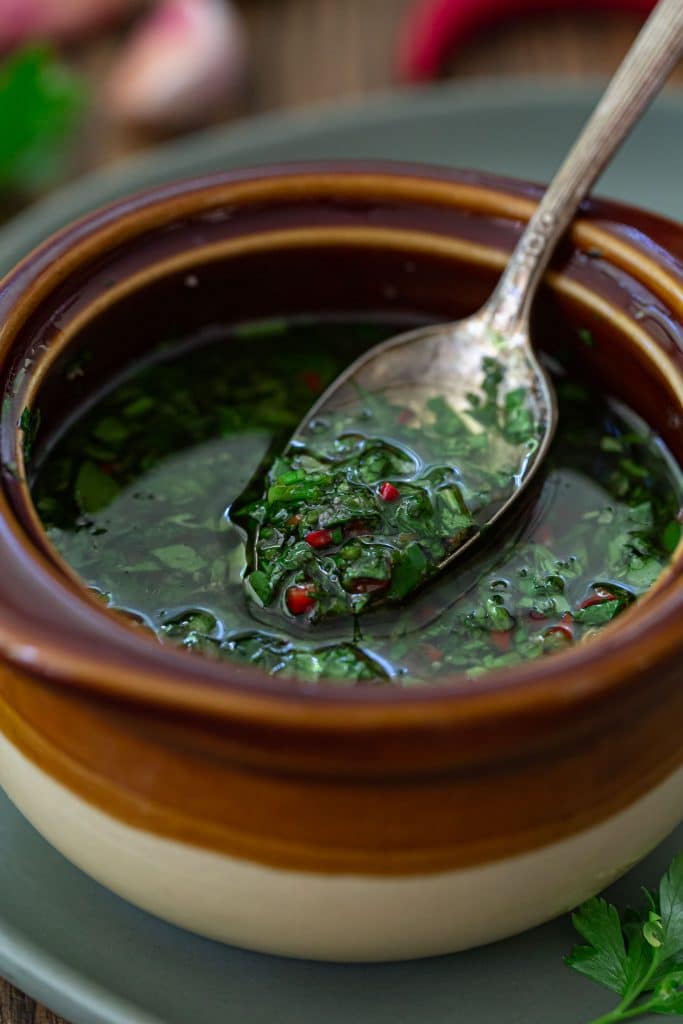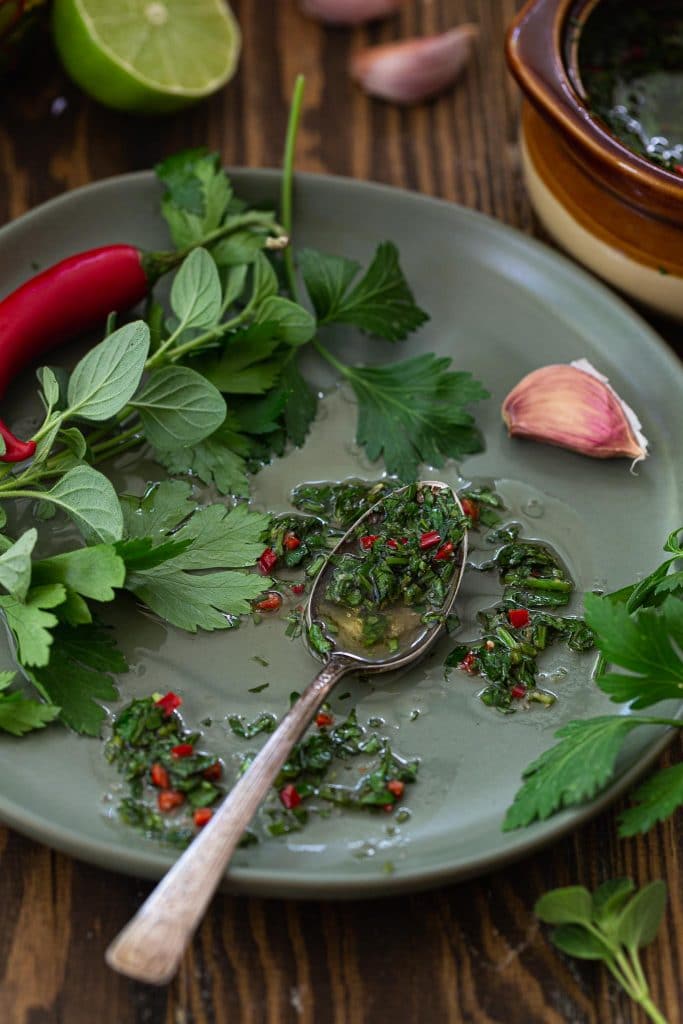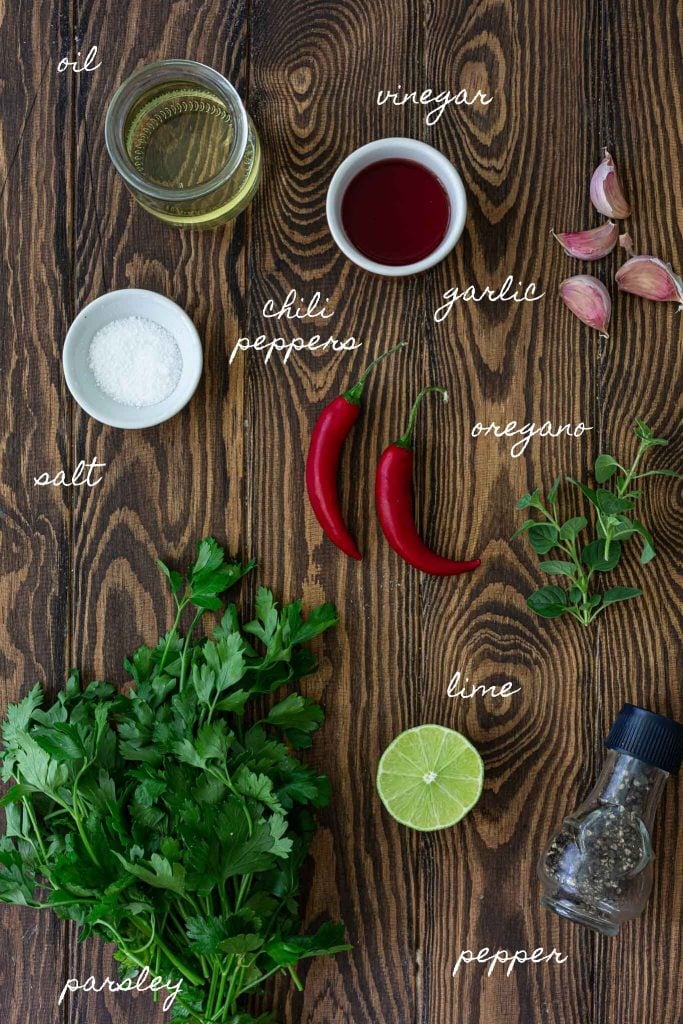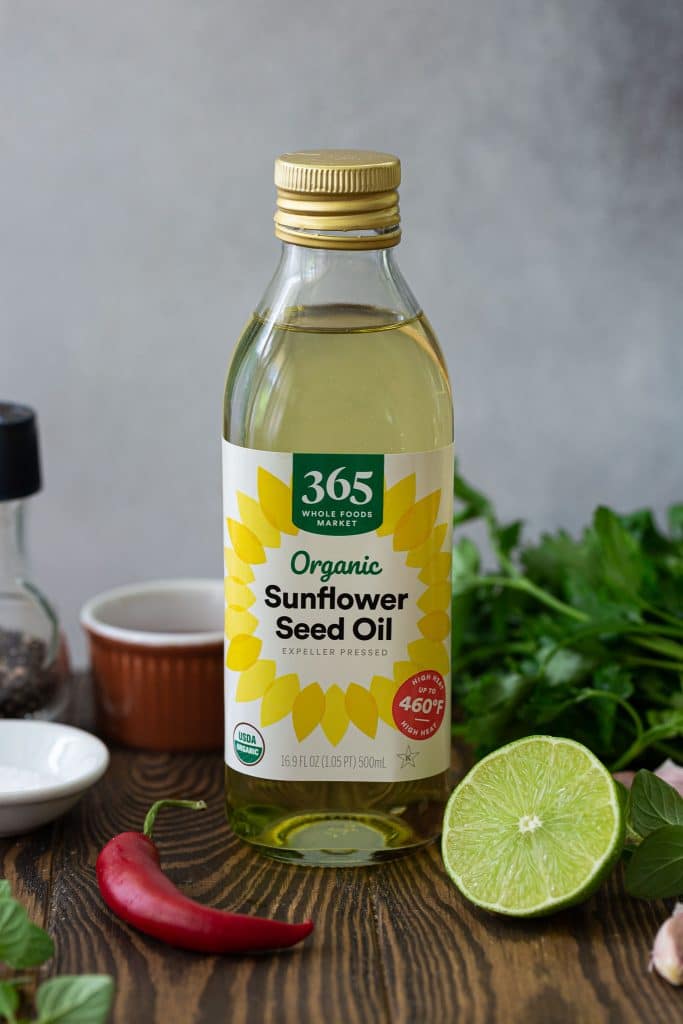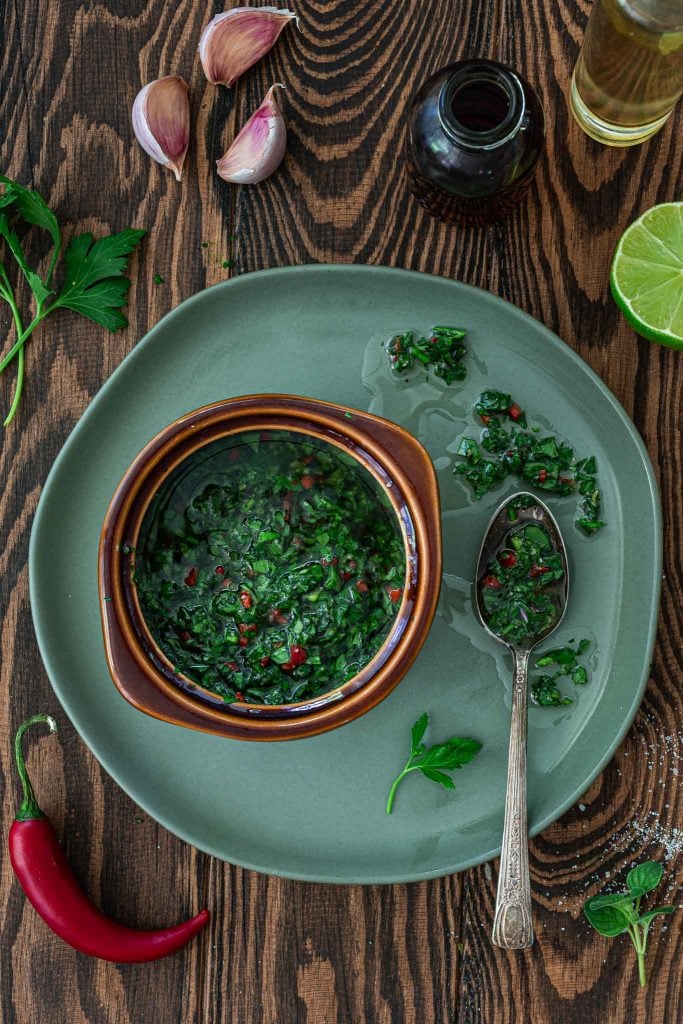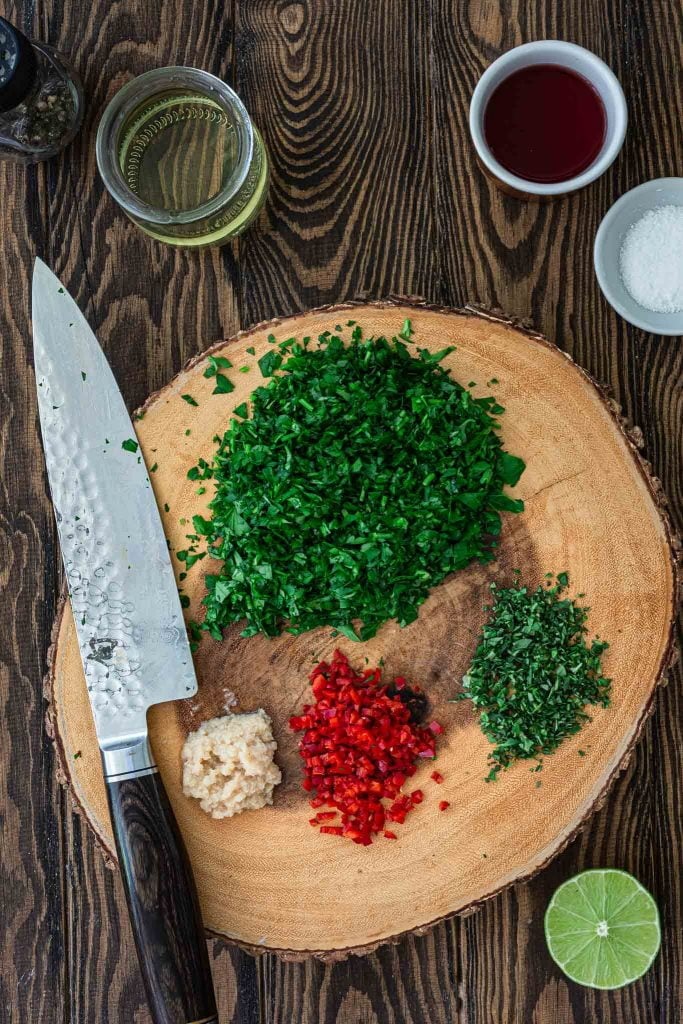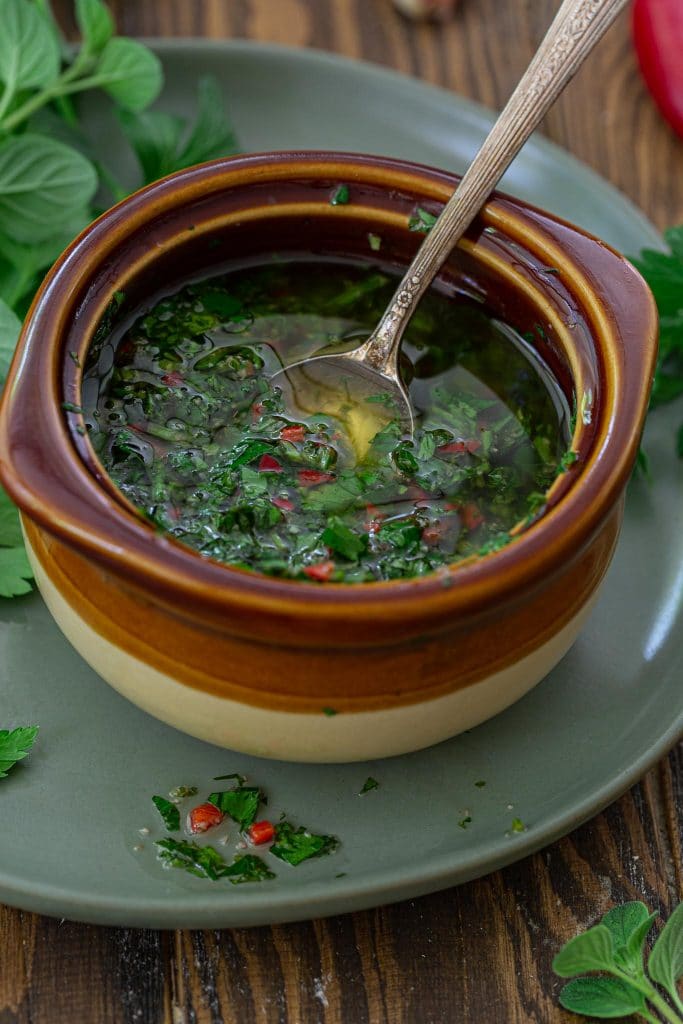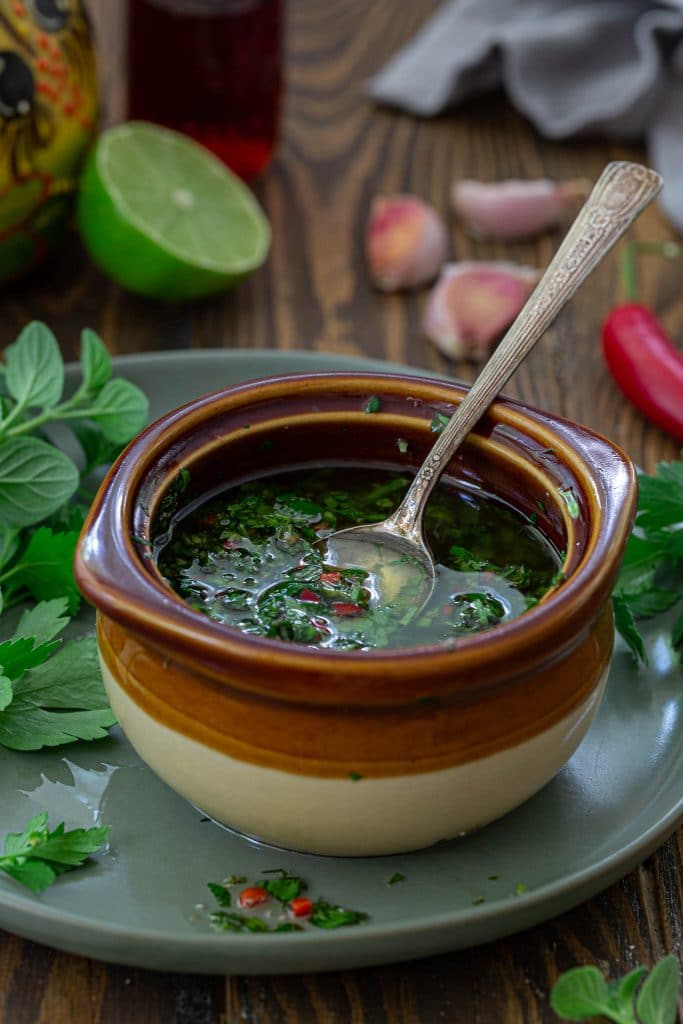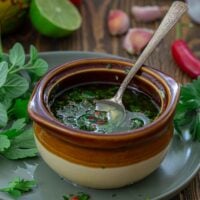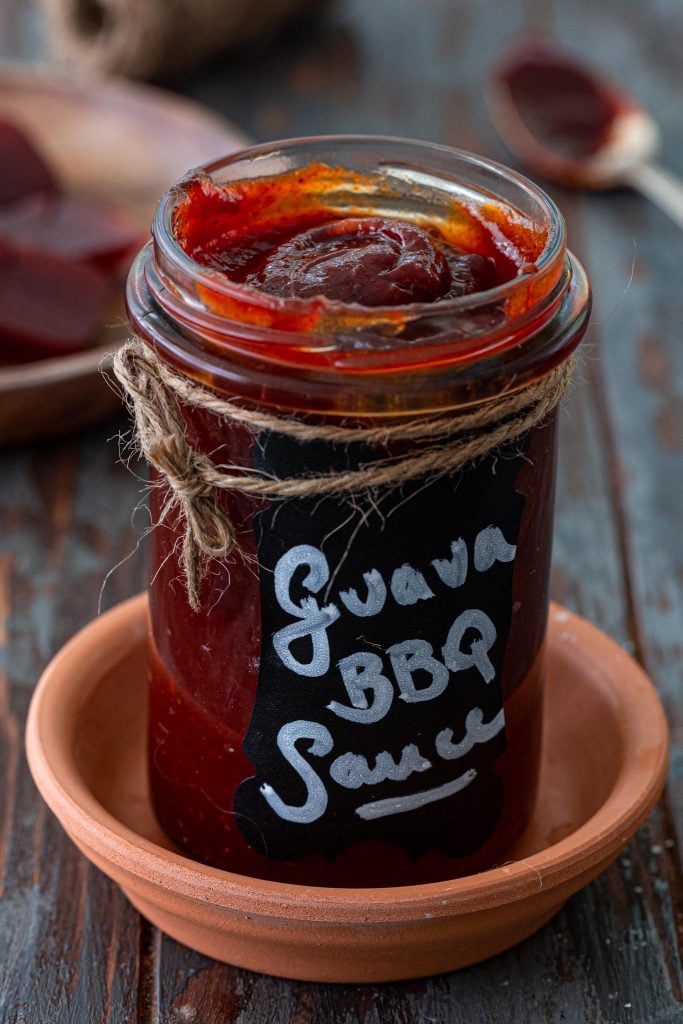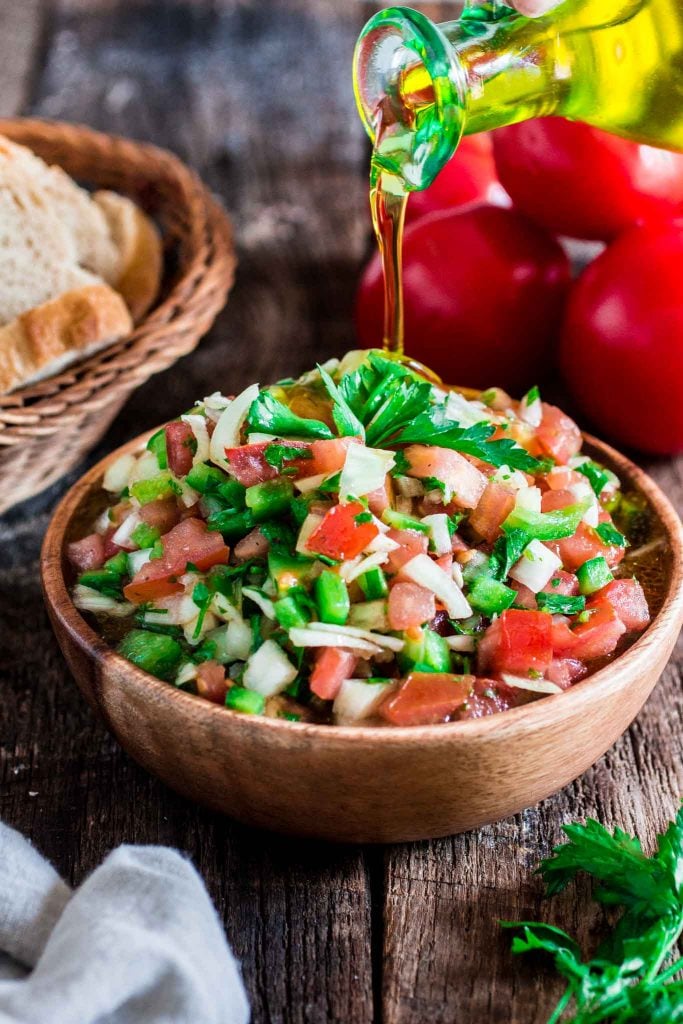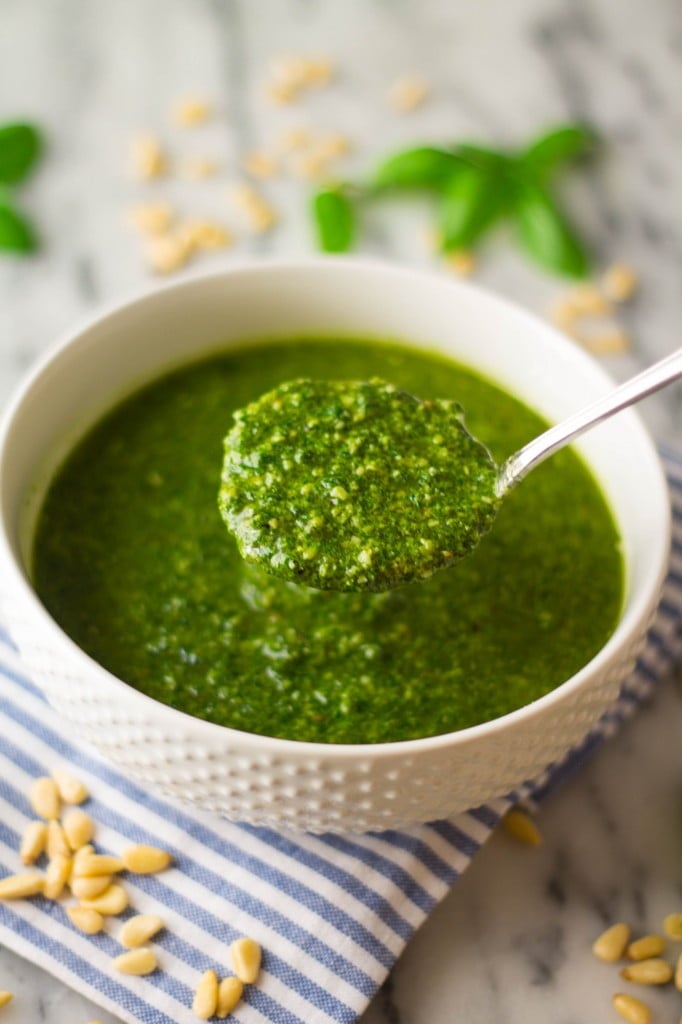If you love South American food, make sure to also check out my Beef Empanadas, Chacarero Sandwich and – of course – all my Brazilian recipes!
A vibrant and fresh sauce for grilled meat!
Move over BBQ sauce, it is chimichurri’s turn to shine! Possibly my favorite side kick for churrasco, this sauce has the power to transform anything you drizzle it on. I may be guilty of dunking some crusty bread on it while I wait for the meat to be ready! Shhh, don’t tell anyone. In my defense, I make extra to account for that! And since this condiment lasts so long in the fridge, you can make a big batch and use it whenever you need a little boost of flavor in your recipes. Whatever you do, DO NOT call it “Argentinian pesto” or “Argentinian ketchup”, unless you want to make some Argentinian enemies…
In this post, you will learn:
What is chimichurri, where is it from and the origins of its name.What goes in chimichurri.If you should use sunflower oil or olive oil. How to make chimichurri sauce.Uses for Argentinian Chimichurri sauce.Frequently asked questions.
Plus, a printable recipe!
What is Chimichurri?
Chimichurri (pronounced chee-mee-choo-ree) is an uncooked sauce, made of herbs (usually parsley and oregano), garlic, oil and vinegar. Very popular in Argentina, Uruguay, Paraguay and in Southern Brazil. Down in South America, you will find both a green (chimichurri verde) and a red (chimichurri rojo) version. Today we are focusing on green chimichurri.
Where is Chimichurri from?
While most people associate Chimichurri with the country of Argentina, it is also claimed to have originated in Uruguay. My brief research on that subject led me nowhere. You can find the sauce in both cuisines, but it’s impossible to know who came up with it first! Having visited both countries, I don’t recall seeing chimichurri in Uruguay as much as I saw it in Argentina. But since I don’t want to create any friction with my hermanos, I will abstain to voice my guesses! 😉
What does the word “chimichurri” mean?
This is another mystery, as there is no evidence on the origins of this word. However, being the food nerd that I am, I did find some interesting theories! One of them says that when the British failed to invade the Spanish colonies in Rio de la Plata in the beginning of the 19th century and were taken prisoners, they would request condiments with their food by saying “Tche! mi curry“. Another popular version – also without any historical evidence – claims that the name came from an Englishman who joined the fight for Argentine Independence and that was called James McCurry. He used to try replicating Worcestershire sauce with local ingredients, and ended up coming up with a mixture similar to what is now chimichurri. Since his name was difficult for Argentines to pronounce, it ended up morphing into chimichurri (“Jimmy’s Curry”). The theory I find the most plausible says that the name drifts from a Basque word: “Tximitxurri“, that mean “mixture”. In fact, there is a sauce with that name in Basque cuisine, made with similar ingredients, hence why I think this is the most credible version!
Argentinian Chimichurri Ingredients
PARSLEY – Some recipes will call for both parsley and cilantro, but authentic chimichurri does not have cilantro in it!OREGANO – Fresh or dried.CHILI PEPPERS – I use 1-2 red chili peppers, but you can use a tablespoon of aji molido or a teaspoon of red pepper flakes instead.GARLIC – Chimichurri is a pretty garlicky condiment, so I use 4 cloves. You can use less if you prefer a subtler garlic flavor.VINEGAR – Red wine vinegar is what it is traditionally used, but you can use white wine or apple cider vinegar if that’s what you have on hand!LIME – I like to add a touch of lime because it pairs great with the herbs and brightens the sauce. You can omit if you prefer!OIL – I use sunflower oil, but you can use any other mild tasting oils (like canola) or even olive oil instead.SALT AND PEPPER – I recommend starting with just a pinch and adding more to taste at the end.
Fresh or Dried Herbs?
While I prefer to use fresh herbs, you can definitely use dried herbs instead. In fact, since chimichurri became popular due to gauchos using it to flavor meat cooked over open fires, chances are that it was traditionally made with dried herbs, as fresh herbs would spoil. However, if using dried herbs, I recommend adding about 1/4 cup of warm water to the sauce to hydrate them.
Sunflower Seed Oil
Traditionally, Argentinian chimichurri is made with sunflower seed oil. Most recipes you will find online ask for olive oil, but olive oil was not widely available in Argentina and Uruguay back in the days, so those versions are not authentic. That being said, I do make my chimichurri with olive oil quite often, as I like the extra oomph of flavors that it gives the sauce. Some people prefer to stick with sunflower oil (or another mild oil), claiming that olive oil outshines the flavors of the other ingredients. I would try making it with both oils and then decide which one you like best!
How to make Chimichurri
Argentinian Chimichurri is a very simple sauce! You do not need any special equipments other than a knife, a cutting board, a bowl and a spoon. Some recipes will suggest you use a food processor, but I find that you risk pureeing the herbs and chimichurri should never be like a pesto! So use this opportunity to work on those knife skills! Recommended tools: sharp knife, cutting board. Here’s how I make this Argentinian Chimichurri recipe. As always, you will find the printable (and more complete) version of the recipe at the end of this post!
Step 1: Chop
Chop every ingredient as finely as you can. If you choose to use a food processor, be careful not to puree the herbs and mix the liquid ingredients separately.
Step 2: Mix
Mix all the ingredients together in a bowl. Add more salt and pepper if needed.
Uses for Argentinian Chimichurri Sauce
Chimichurri is often served as a side sauce to asados (grilled meats). It goes exceptionally well with flank or skirt steak, as well as poultry, sausages and fish. It can also be used as a marinade or as a basting sauce to spoon onto the meat as it cooks. Other fun (yet not traditional) ideas:
As a salsa for tacos or tostadas. Drizzled on roasted potatoes. As a sauce for sandwiches, burgers or hot dogs. You could also mix it with some mayo for a creamy version! Drizzled on sausage pizza. As a dressing for a steak salad.
Did you make this recipe? I love hearing from you! Please comment and leave a 5-star rating below. You can also take a photo and tag me on Instagram with #oliviascuisine.
If you like this Argentinian Chimichurri Sauce, you will also love:

